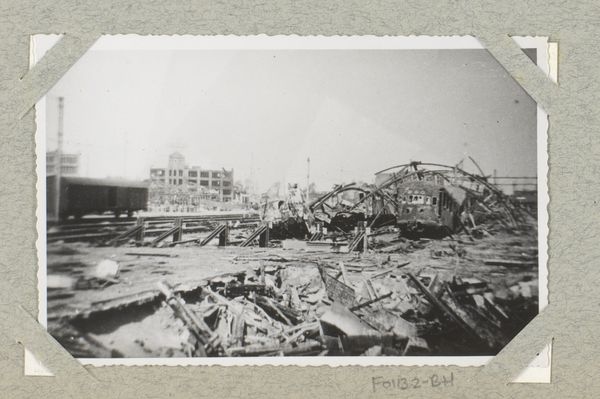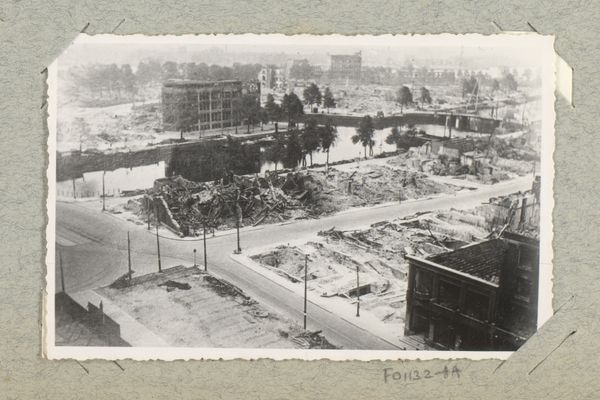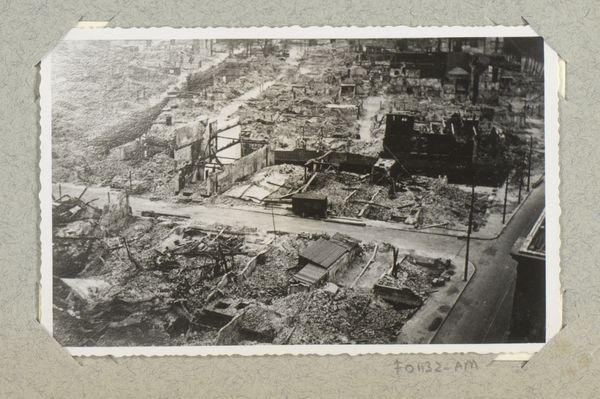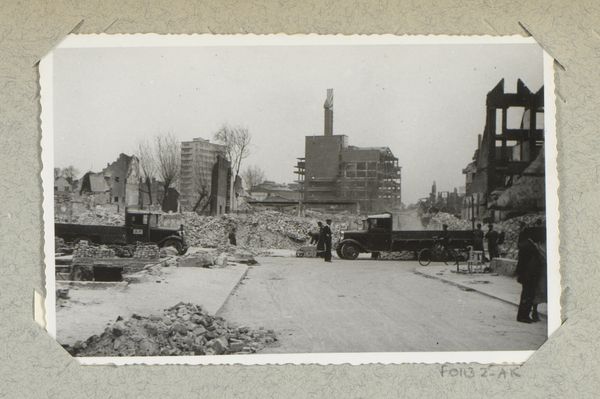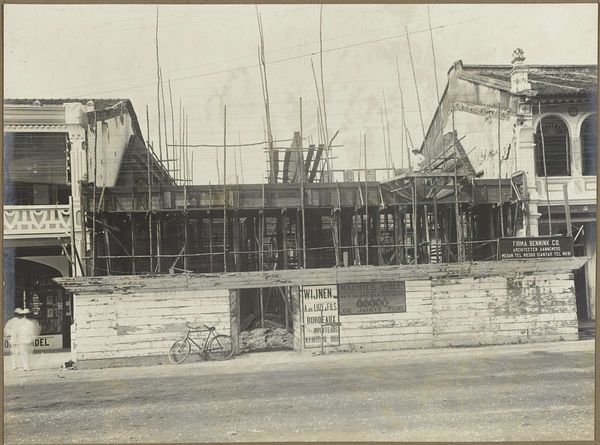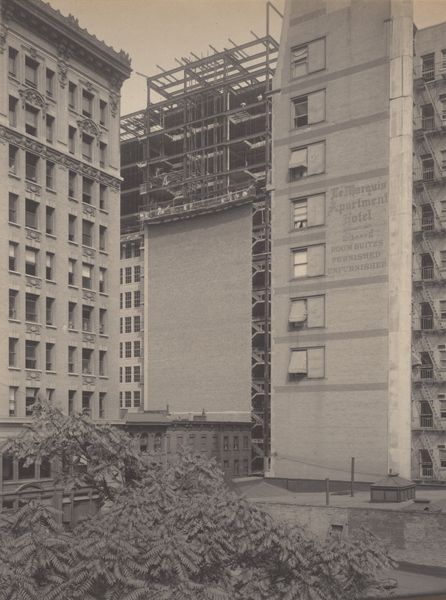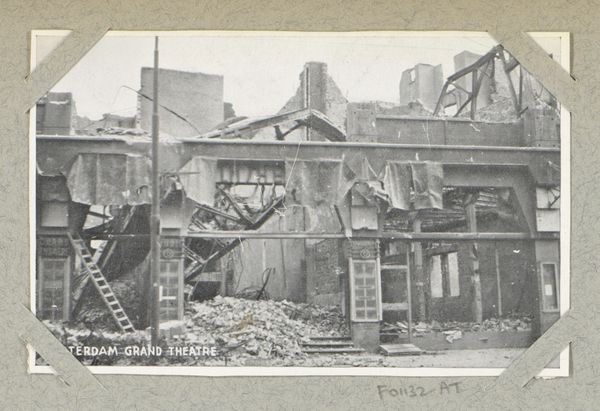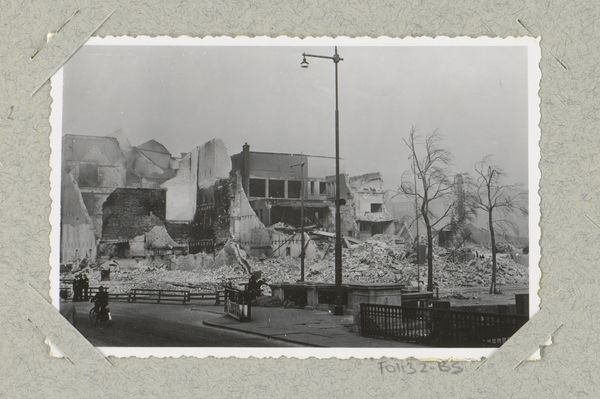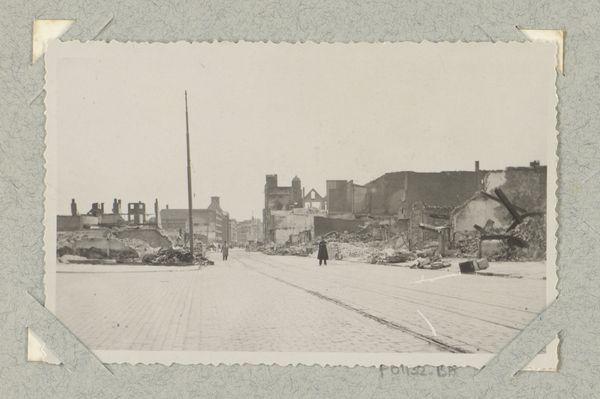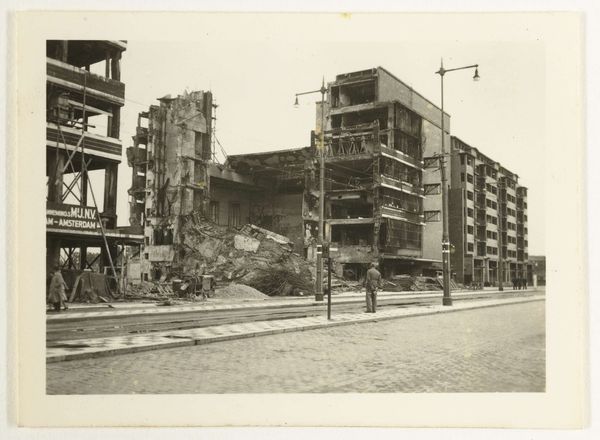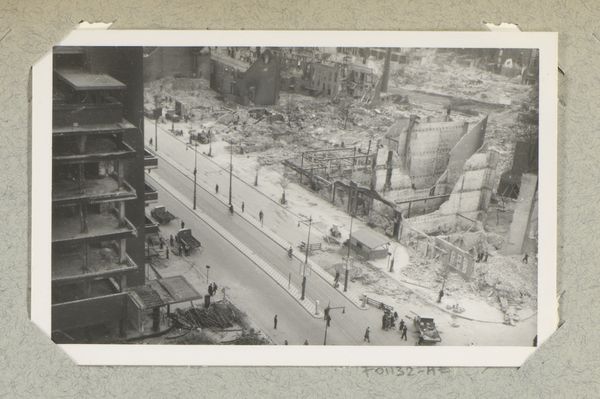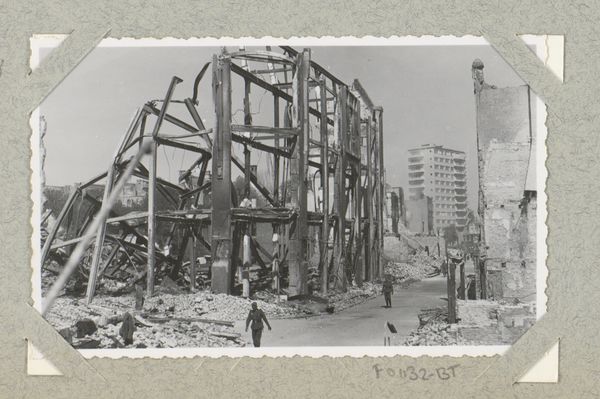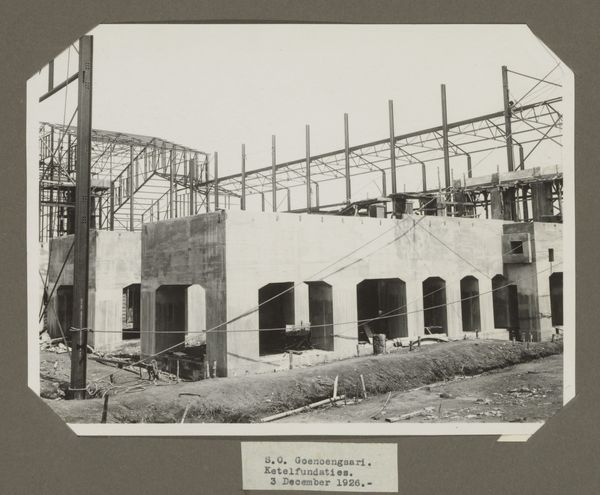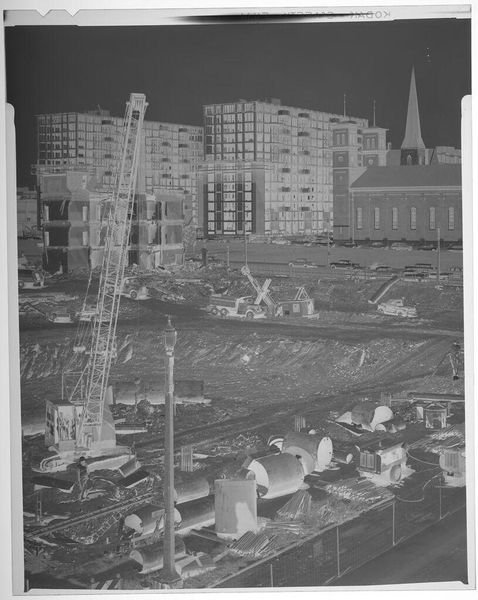
Dimensions: height 85 mm, width 134 mm
Copyright: Rijks Museum: Open Domain
Editor: This gelatin silver print, "Ruïnes bij de Karrensteeg te Rotterdam," made by J. Nolte around 1940-1945, depicts a desolate cityscape. The ruins create an eerie, unsettling atmosphere. What stands out to you in this photograph? Curator: What I see is a photograph deeply embedded in a specific historical context. Rotterdam suffered devastating bombing during World War II. This image isn't just a depiction of ruins; it's a document of the consequences of war on civilian life and urban space. What do you think this photograph communicates about the public role of art? Editor: Well, it serves as a powerful visual record. It forces us to confront the brutal realities of the war and perhaps reflects on the failure of societal structures to protect its citizens. Does the framing of the photograph play a role in how the public interprets it? Curator: Absolutely. The photographer, J. Nolte, likely framed the scene to evoke specific emotions. The perspective, looking down upon the destruction, almost suggests a detached observation, but the raw, visceral nature of the debris pulls us back into the horror of the event. Also, consider how images like these influenced public opinion about the war. How do you feel the photographer felt? Editor: Perhaps Nolte intended to create a piece that, beyond its documentary aspect, prompts viewers to reflect on the long-lasting scars of conflict on a city's identity and the lives of its inhabitants. Seeing it contextualized like this offers new layers of appreciation. Curator: Indeed, and the photograph's preservation in an archive, gives it renewed significance for present and future generations to reflect on its meaning. Editor: That's true; understanding its place in history completely changes my perception of the image. Thanks for shedding light on that!
Comments
No comments
Be the first to comment and join the conversation on the ultimate creative platform.
